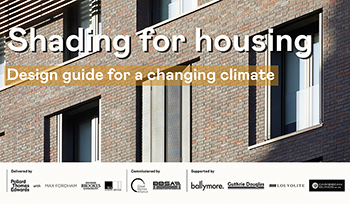Ramps
Contents |
[edit] What are ramps?
Ramps are sloped pathways used both inside and outside buildings and elsewhere in the built environment used to provide access between different vertical levels. Ramps provide an alternative to stairs for wheelchair users, people with mobility issues and people with prams, bicycles and other wheeled items.
The gradient, slope or steepness of a ramp is the angular relationship between its rise (vertical height) and its horizontal projection or length (run), often expressed as a ratio. The rise may be set at a unit of one, so that, for example, a slope of 1:20 means that as each dimensional unit of height rises or falls, the dimensional unit of length runs out by 20 units. A ramp that has too steep a slope will prove difficult for people to use and could even be unsafe, whilst a ramp with too shallow a slope can require excessive length.
[edit] What are the considerations when designing ramps?
There are a wide range of issues that must be considered in the design of ramps, including:
- The appropriate steepness, length and width.
- The distance between horizontal landings.
- Likely users and the assistance they may require.
- Surface materials.
- Approach and access onto the ramp.
- The position of handrails and barriers.
- Placement of door handles and the swing direction of doors opening into ramped areas.
- The impact of a ramp on available space, existing trees, vegetation, and so on.
- Colours to maximise visual legibility.
- The inclusion of tactile surfaces for people with visual impairment.
- Cost.
- Compliance with the building regulations.
- The availability of alternative means of access.
- Possible alternatives such as lifts, chair lifts, alternative routes and so on.
[edit] How are ramps regulated?
The Workplace (Health, Safety and Welfare) Regulations 1992 Approved Code of Practice and guidance states: 'Regardless of their disability, people should be able to gain access to buildings and use the facilities. This could mean that an employer may need to make some changes to a building or premises to take account of the disabled person's needs.'
Furthermore, the Equality Act 2010 requires that 'reasonable adjustments' are made when providing access to goods, facilities, services and premises.
The buildings regulations approved document M (Access to and use of buildings) requires that 'reasonable provision shall be made for people to: a) gain access to; and b) use the building and its facilities.' It also states that 'where the gradient of the approach, whether over its whole length or in part, is 1:20 or steeper, that part of the approach should be designed as ramped access.'
In all cases, it is recommended that stair access also be provided as ramps are not necessarily convenient for all people, even those with mobility issues.
Where the total rise between levels is greater than 2 metres, an alternative means of access for wheelchair users should be made available, such as a lift.
[edit] How steep can ramps be?
According to approved document M, the gradient of a ramp and its going (horizontal distance) between landings must be in accordance with the following table:
| Max. going of ramp | Max. gradient | Max. rise |
| 10m | 1:20 | 500mm |
| 9m | 1:19 | 473mm |
| 8m | 1:18 | 444mm |
| 7m | 1:17 | 411mm |
| 6m | 1:16 | 375mm |
| 5m | 1:15 | 333mm |
| 4m | 1:14 | 285mm |
| 3m | 1:13 | 230mm |
| 2m | 1:12 | 166mm |
[edit] What are the requirements for external ramps?
Approved document M sets out the following requirements for external ramps:
- Gradients should be as shallow as is practicable.
- The surface should be firm and even.
- Stairs should also be provided as adverse weather conditions can increase the risk of slipping on a ramp.
- Landings should be at least 1.2 metres long at both the foot and head of the ramp.
- Support in the form of handrails should be provided on both sides of the ramp.
- The approach to the ramp should be clearly marked.
- Flights should have a going of less than 10 metres and a rise of less than 500 mm.
- The surface width of a ramp between walls, upstands or kerbs must be at least 1.5 metres.
- The surface of the ramp must be slip resistant and of a colour that contrasts visually with that of the landings. However, the frictional characteristics of the ramp and landing should be similar.
- Landings should be provided as passing places (at least 1800 mm wide x 1800 mm long) when it is not possible to see from one end of the ramp to the other, or where the ramp has 3 or more flights.
- All landings should be level, subject to a maximum gradient of 1:60 along the length, and a maximum cross-fall gradient of 1:40.
[edit] What are the requirements for internal ramps
The design considerations for internal ramps are the same as those above for external ramps, excluding issues relating to the external environment.
Steps should be provided as well as a ramp unless one of the following criteria can be fulfilled:
- The ramp is sufficiently short.
- The ramp has a shallow gradient.
- The rise is no more than the minimum that can be provided by two risers.
[edit] Related articles on Designing Buildings
- Accessibility in the built environment.
- Access and inclusion in the built environment: policy and guidance.
- Access consultant.
- Approved Document K.
- Approved Document M.
- Disabled access lifts.
- Equality Act.
- Escalator.
- Gradient.
- Guarding.
- Hazard warning surfaces.
- Inclusive design.
- Lifting platform.
- Lifts.
- Older people.
- People with disabilities.
- Planning transport for people with disabilities as the population ages.
- Stairs.
- Stairlift.
- Railings.
Featured articles and news
Editor's broadbrush view on forms of electrical heating in context.
The pace of heating change; BSRIA market intelligence
Electric Dreams, Boiler Realities.
New President of ECA announced
Ruth Devine MBE becomes the 112th President of the Electrical Contractors Association.
New CIAT Professional Standards Competency Framework
Supercedes the 2019 Professional Standards Framework from 1 May 2025.
Difficult Sites: Architecture Against the Odds
Free exhibition at the RIBA Architecture Gallery until 31 May.
PPN 021: Payment Spot Checks in Public Sub-Contracts
Published following consultation and influence from ECA.
Designing Buildings reaches 20,000 articles
We take a look back at some of the stranger contributions.
Lessons learned from other industries.
The Buildings of the Malting Industry. Book review.
Conserving places with climate resilience in mind.
Combating burnout.
The 5 elements of seiri, seiton, seiso, seiketsu and shitsuke.
Shading for housing, a design guide
A look back at embedding a new culture of shading.
The Architectural Technology Awards
The AT Awards 2025 are open for entries!
ECA Blueprint for Electrification
The 'mosaic of interconnected challenges' and how to deliver the UK’s Transition to Clean Power.
Grenfell Tower Principal Contractor Award notice
Tower repair and maintenance contractor announced as demolition contractor.
























Comments
[edit] To make a comment about this article, or to suggest changes, click 'Add a comment' above. Separate your comments from any existing comments by inserting a horizontal line.
Dear Sir: please include the relationship between the color of the floor for each surface: the ramp and the horizontal floor, the degree of the difference in color as contrast to avoid confusion thanks!